The Science Behind 'Somersault' Crashes & Dangerous Aero
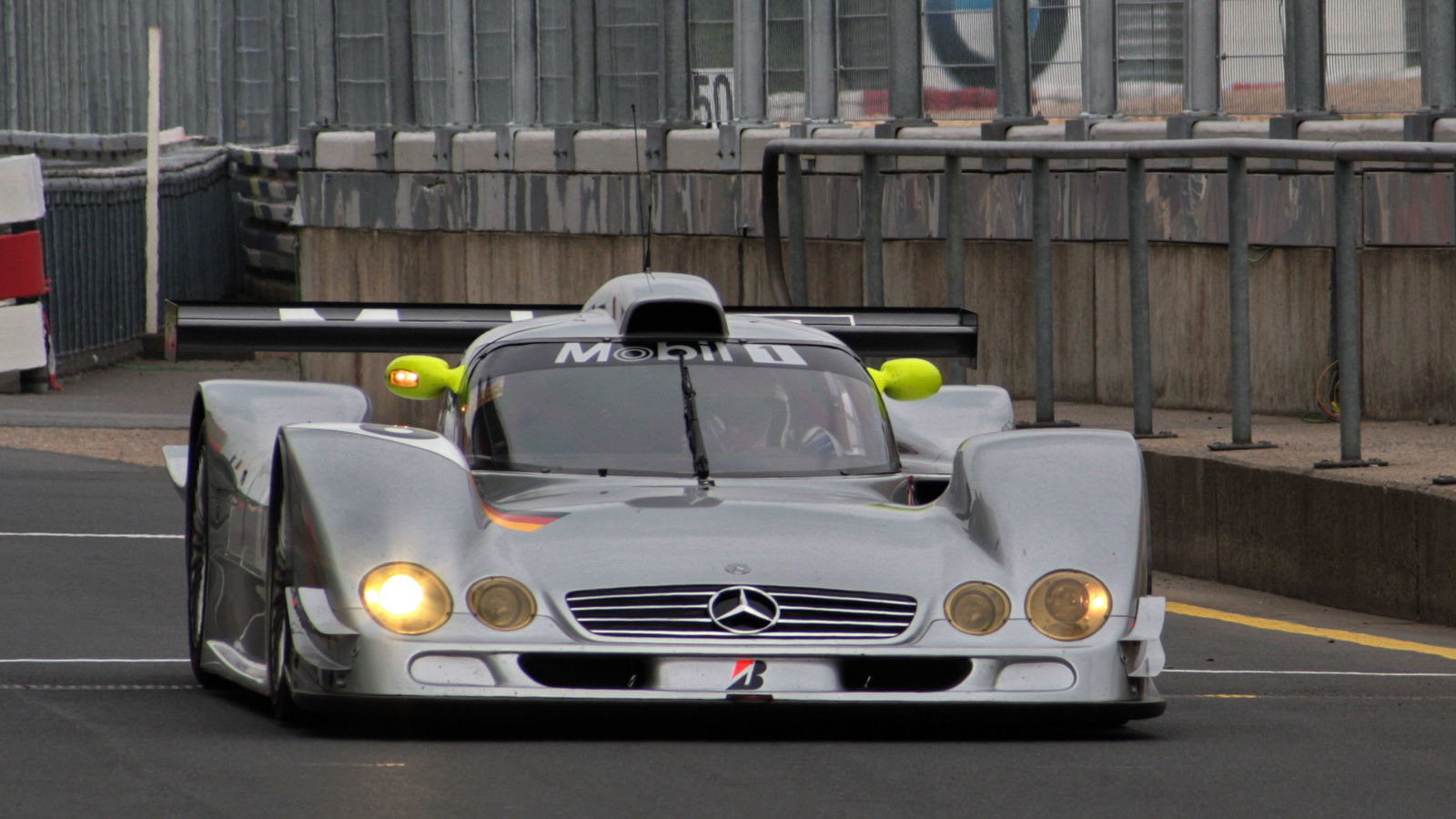
Race car crashes can be horrifying, but none get close to the craziness of those witnessed at the 1999 Le Mans 24 hour race. Seemingly out of nowhere, cars can suddenly flip in the air, with some doing full 360s or others cascading off into or even over the barriers.
This aerodynamic witchcraft must have been truly terrifying from the cockpit of the cars at hand and also bewildering to the engineers responsible for the car’s design. Although these types of accidents are now extremely rare, let’s take a look at the theory behind these flying cars, particularly at the make-up of the now-legendary Mercedes-Benz CLR.
Firstly, an aspect of a race car’s setup that impacts its aerodynamic performance is the pitch angle, that being the angle of the car’s nose in relation to the road surface. A positive pitch angle lifts the nose into the air, while a negative angle pitches the car slightly downwards towards the track.
In LMGTP cars, the pitch angle was generally negative as this made for high downforce in the corners, if sacrificing a little in terms of top speed. But for the long straights of Le Mans, the pitch angles of the Mercedes cars were nearer neutral to allow the cars to take full advantage of their naturally-aspirated 5.7-litre V8s. This was implemented by softening the rear suspension, making the relatively stiff front axle susceptible to hopping and jumping.
The LMGTP cars of the 90s usually operated between a -0.7 degree and 0 degree pitch angle but there are specific occasions where the relative pitch angle of a car can become suddenly positive. The main cause of this is when driving at high speed over the brow of a hill as - relative to the tarmac - the pitch angle naturally increases to an unusually high positive value.
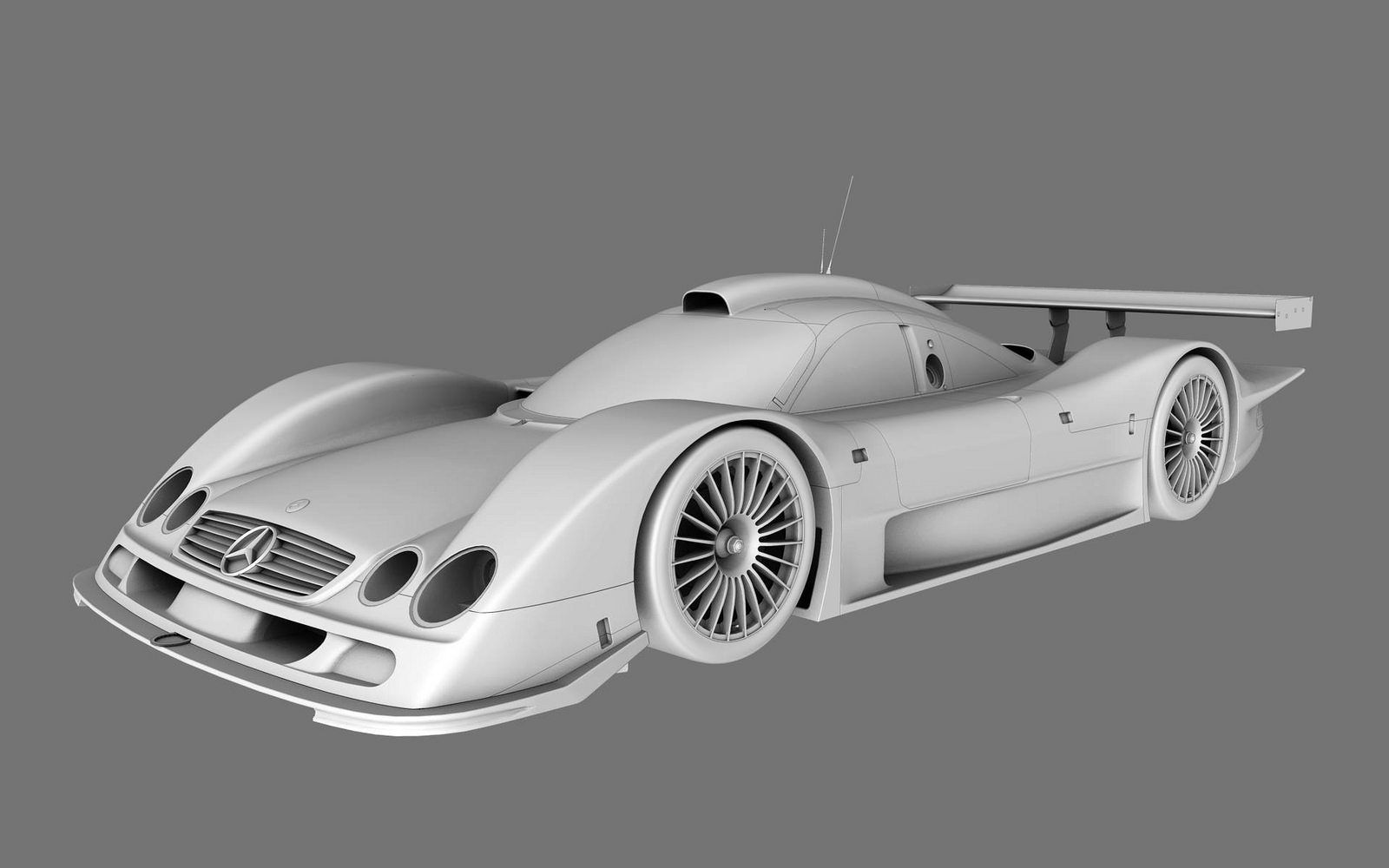
Research conducted after the crashes using scale models showed the effect that the pitch angle had on the downforce acting on the car, and the results were quite startling. As the nose pitch was tilted upwards, the downforce on the front axle reduced at a small rate as the car reached neutral pitch. Once the car reached +2.0 degrees however, the lack of downforce was so great that it shifted to a lift force. With the downforce on the rear axle staying roughly constant throughout, the overall force on the car was nearing total lift at this angle of pitch.
That equilibrium was met at +2.4 degrees in the experiments, with 400kg of downforce on the rear axle cancelled-out by the same value of lift at the front. With the front axle weight being overcome by the lift force, the front of the car would lift clear off the ground, suddenly increasing the angle of pitch and sending the centre of pressure backwards and the car into the heavens.
Another aspect of the CLR that made it vulnerable (along with a select group of other cars) was the geometry of its front nose. The overhang from the front wheels was longer than the rest of the cars in the field by around 10cm.
As a torque is a force multiplied by a distance, the longer overhang means that the twisting torque trying to rotate the car upwards from its front axle is increased, resulting in a much more pitch-sensitive vehicle which pivots from the rear axle. Add in the flat undersides of these cars along with big rear wings pushing down on the rear axle pivot point and the recipe for take-off is fairly prominent.
Slipstreaming is another factor that could have reduced the frontal downforce on the car and when looking at the footage, the cars are attempting overtakes moments before the slips occur. The turbulent air stream that the car will enter as it goes for an overtake will reduce the smooth interaction of the incoming air with the small front splitter. This will inevitably reduce the aerodynamic efficiency of the component, creating unwanted lift.
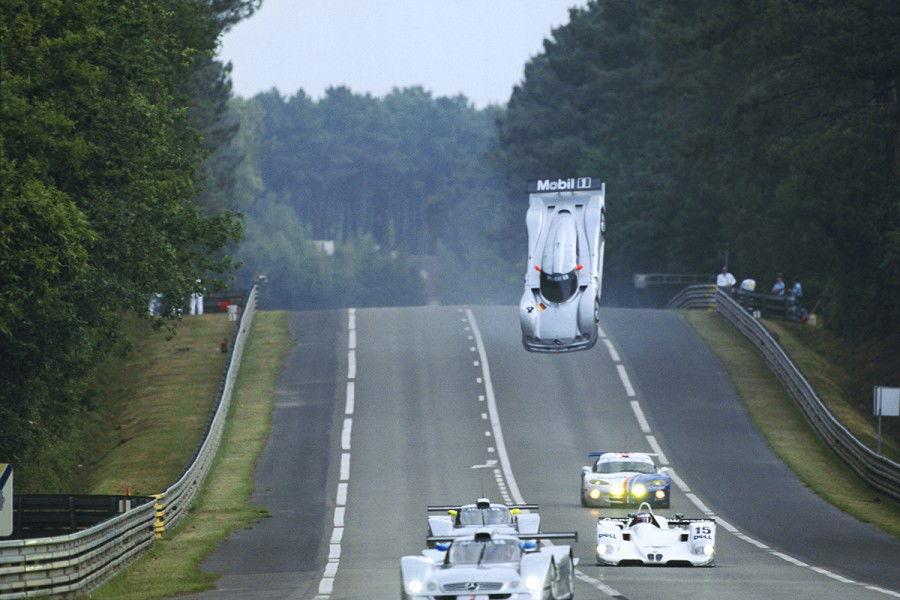
During the 1999 Le Mans race weekend, the Mercedes-Benz CLRs flipped three times; twice with Mark Webber at the wheel (both of which weren’t caught on film) and then the famous flip of Peter Dumbreck’s car (above) on the approach to Indianapolis Corner. A Porsche 911 GT1 racer performed the same acrobatics in 1998 at Road Atlanta as well as a BMW LMP flip two years later. All of these accidents happened either once driving over crests or while clipping kerbs, showing the aerodynamic instability of the racing cars of that time once their noses lifted.
As a result of the events in 1999, changes were made to the track by softening undulations, with the hill in the run-up to Indianapolis being smoothed to increase the safety factor within the car’s aero packages. Regulations were also altered for car design, with overhang limits being set to avoid any more potentially tragic incidents.
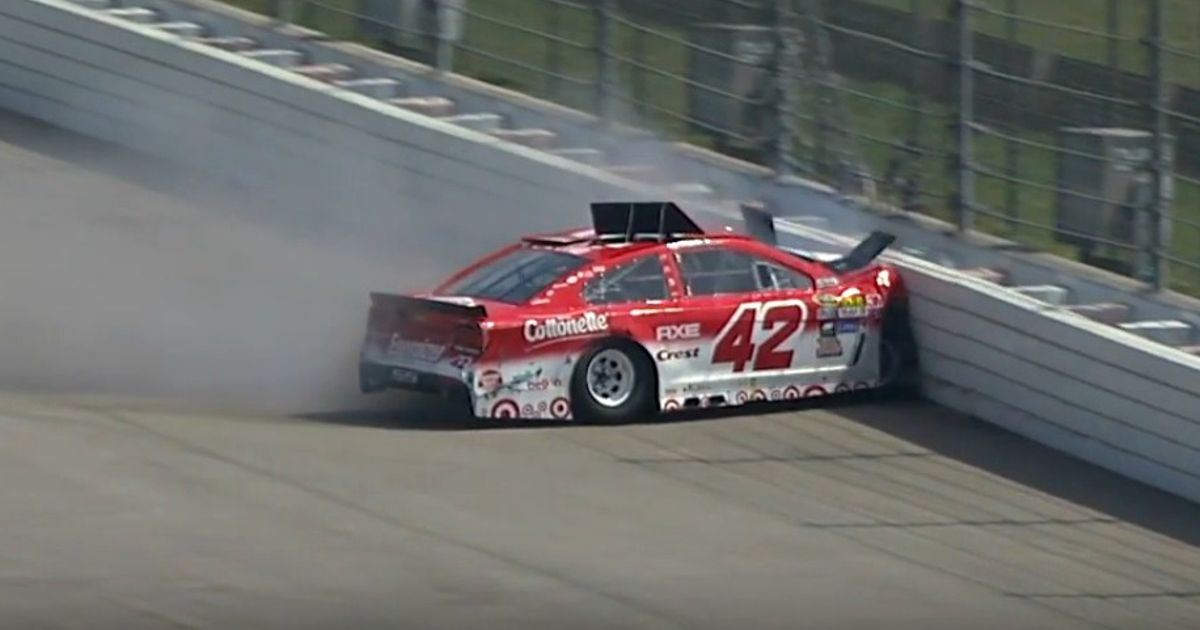
Although Mercedes blamed the circuit for the team’s misfortune, research clearly shows that the CLR was simply not designed to handle the aerodynamic variance of Le Mans. The almost identical accidents also reinforce that the instability of the car was the main problem and it wasn’t long after the crashes that Mercedes brushed the entire episode under the rug and left Le Mans racing for good.
Thankfully no one was badly hurt in these crashes and they make for some spectacular viewing but in hindsight it showed the lack of aerodynamic knowledge when compared to the engineering that was seeing cars travel down the Mulsanne straight upwards of 200mph. Thankfully with active wings and millions of pounds going into racecar dynamic development, it seems that engineers have almost mastered the art of aerodynamics, learning lessons from these past disasters. So hopefully we won’t see cars try to become aircraft again any time soon.
Do you think racing has become far too aero-obsessed? Or does ramping up corner speeds make modern racing more exciting? Comment with your thoughts below!
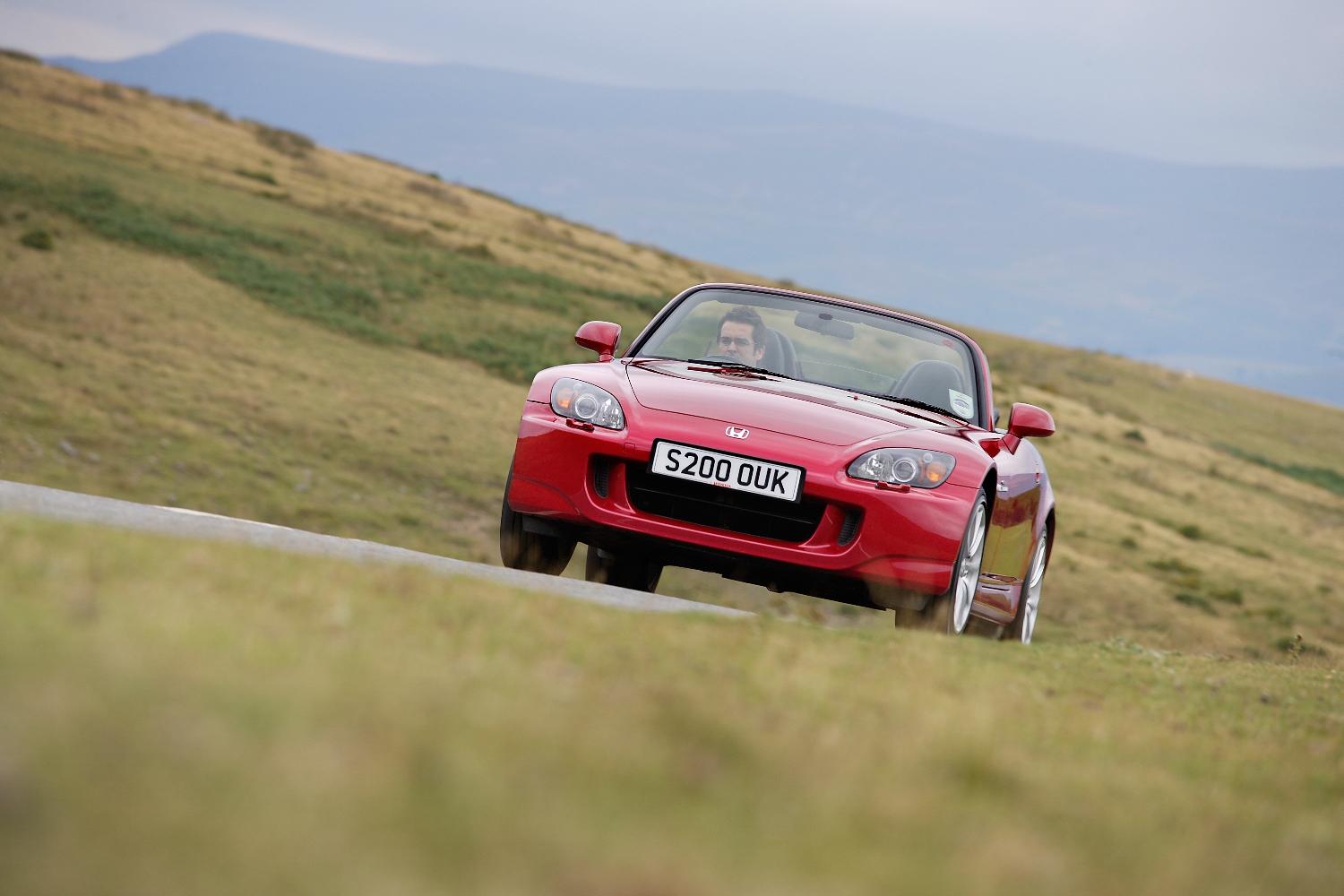
Comments
https://media.giphy.com/media/6cEDJgXUpaco/giphy.gif
Some say he is still flying…
Spread your wings
And fly away
Fly away
Fly awaay.
Are we forgetting about this?
When watching the race a few years ago, they said that the hole above the wheel well was mandatory because it helped stop the flipping too.
And they said that an advertisement in the wing was a waste of funny. Haha!
“Gaskings I Believe I Can Fly Compilation 420”
“The brakes were still applied”
FIa and IMSA be like “it’s just too fast, now needs tighter restrictor plate.”
Some say the CLK has been spotted in a tree near the track, only to fly away at the sound of a Porsche
Pagination